Dawn and sunset of electric vehicles: the first half of the XX century
The electric car Detroit Electric of 1907 overcame 130 kilometers without recharging, and the BMW i3 of the 2013 release recharging overcomes ... 130 kilometers. Like the brand new VW Golf with an electric motor. Only Tesla is out of the list, as the Model X travels 426 kilometers on one charge. About how the electric vehicle market looked at the beginning of the 20th century and why at some point everyone moved to a car with internal combustion engines - read under the cut.
The whole cycle of articles:
Electric Dawn: 19th Century
Dawn and sunset of electric vehicles: the first half of the XX century
Electric car strikes back: the second half of the XX century
Revenge of the electric car: the beginning of the XXI century
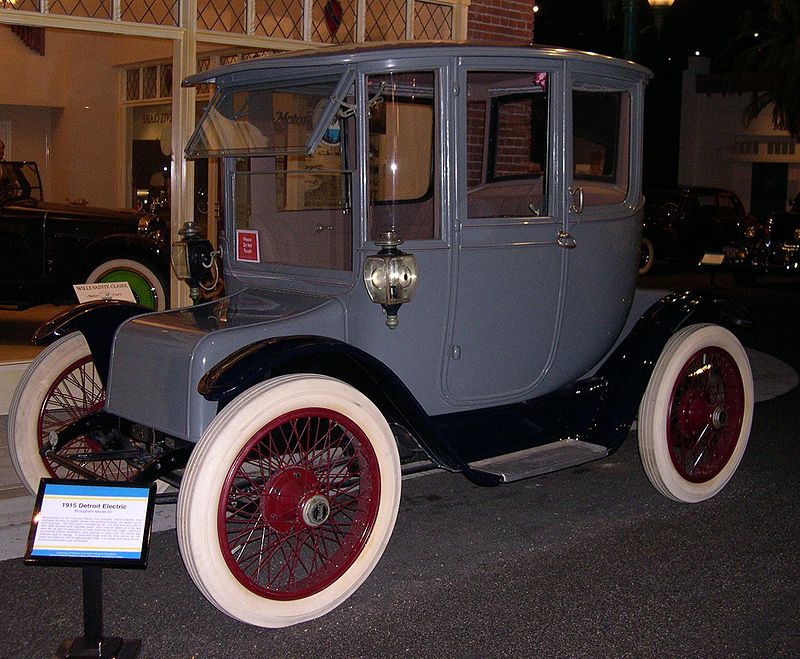
In the last article, we dwelled on the fact that at the beginning of the 20th century electric vehicles were especially popular in New York.
')
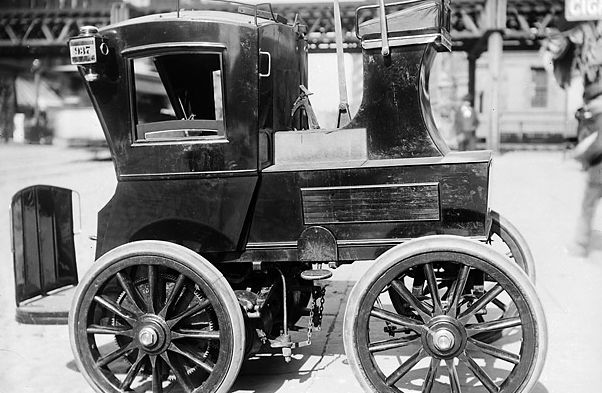
In Russia, the dawn of electric vehicles was late, despite the efforts of individual engineers.
At the beginning of the century, such an omnibus from the Dux company for ten people already traveled around Moscow. And Ippolit Romanov, the inventor of the two-seater electric car, asked the St. Petersburg Duma to allow opening ten routes for eighty omnibuses. Such a turn of events did not suit the horse owners and izobopromyshnikov - they did everything possible to ensure that the project Romanov did not take place. Unfortunately, Romanov lost in this fight.
In 1914 there were 8 electric carriages in Russia: 4 trucks, 1 tricycle van and 3 private cars.

The firm "Dux" tried to produce such a bus for movement on rails.

Since there were a lot of electric cars and steam-powered cars in the United States at the beginning of the century, charging stations were there as often as gas stations. Electric car on charging at some barn.
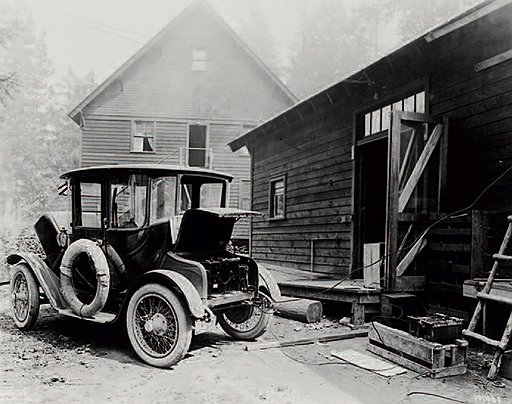
US Senator Rhode Island George Whitmore on the electric car, 1906.
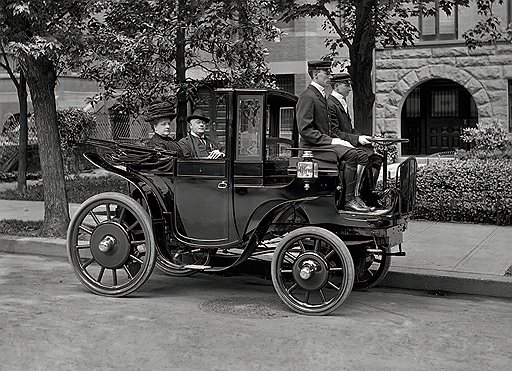
From 1907 in Detroit began to produce cars under the brand name Detroit Electric. These electric cars were collected until 1939. Initially, cars equipped with lead-acid batteries, but from 1911 to 1916, it was possible to choose a version with Edison's iron-nickel battery. The maximum speed was 32 km / h, and the car could drive 130 kilometers.
During World War I, gasoline prices were high, so in the 1910s electric cars were in special demand - the company sold up to two thousand units a year. In the 1920s, sales declined due to lower prices for cars with an internal combustion engine.
In this photo - Thomas Edison at the car of this brand. The company was owned by Thomas Edison, John Rockefeller and Henry Ford's wife, Clara Ford.
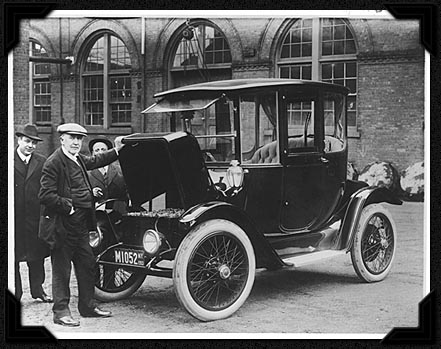
EV-Opera-Car, model 68/17 B.
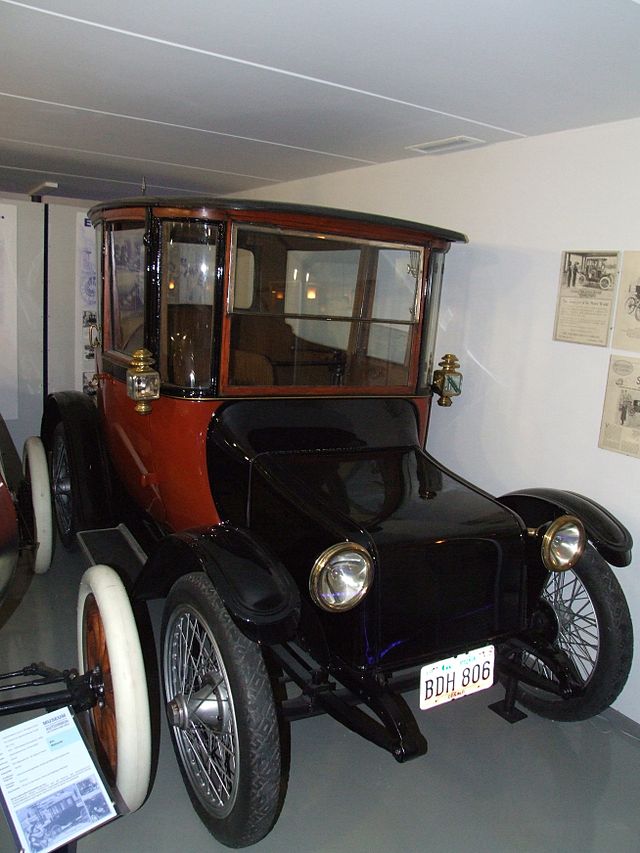
1915 model.

Print ads for Detroit Electric cars of the 1920s.

Hybrid cars did not come up yesterday or the day before yesterday. In 1916, Clinton Edgar Woods began production of the Woods Dual Power Model 44 Coupe with an electric motor and an internal combustion engine — two at once.
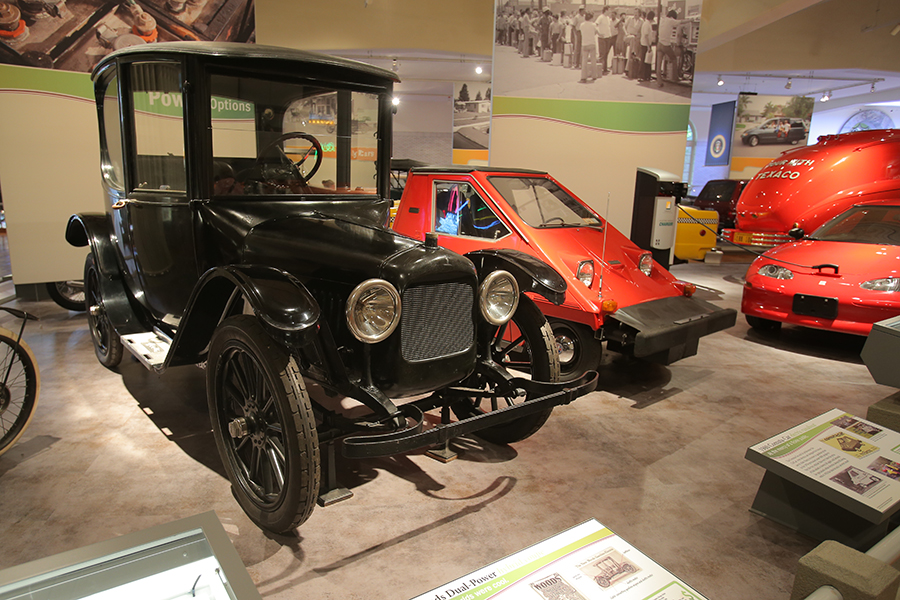
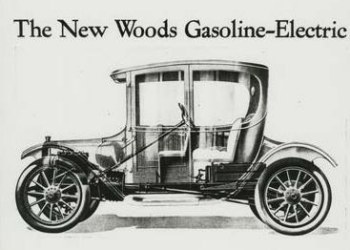
In the USSR in 1935, an electric vehicle was built on the basis of GAZ-A.
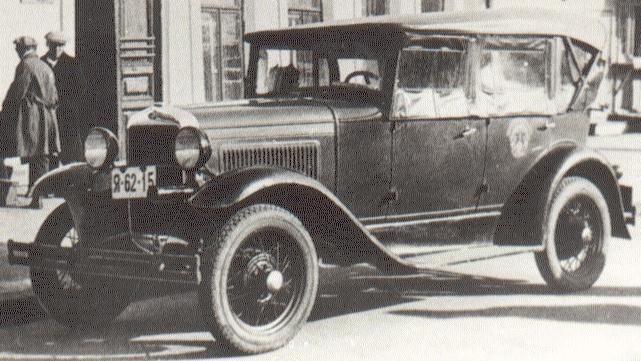
In the same year, an accumulator garbage truck was built at MEI, having converted the ZIS-5 into it. The car was equipped with forty batteries with a total capacity of 168 ampere-hours, their weight was 1,400 kg. Such an electric vehicle was capable of transporting garbage weighing 1800 kg at a speed of 24 km / hour for forty kilometers. Engine power - 13 kW.
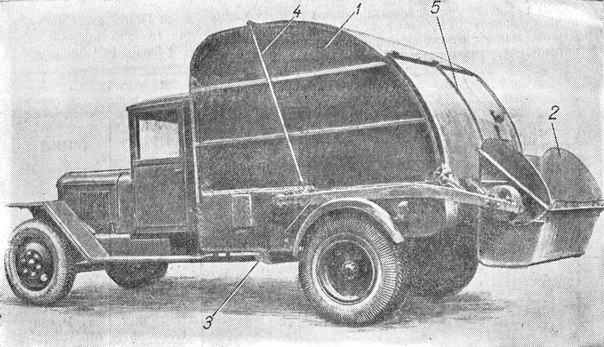
Swedish truck with an electric motor, 1943.
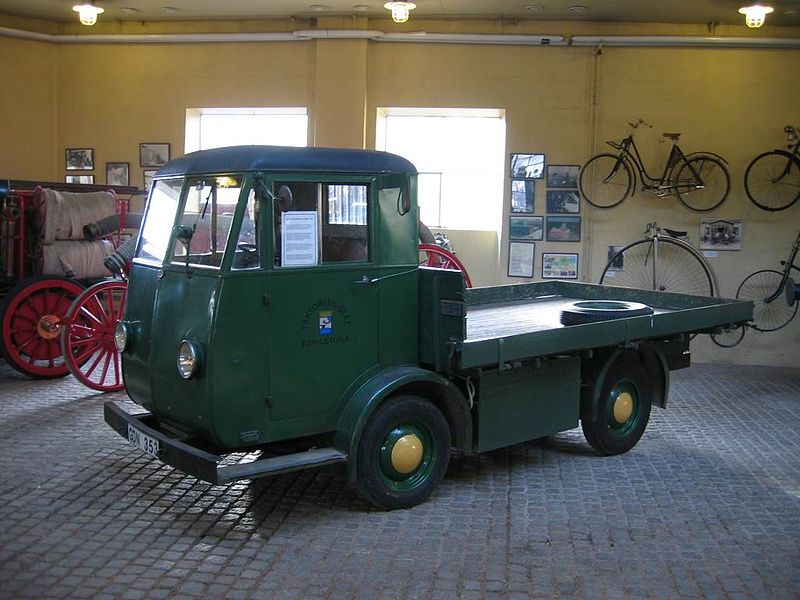
Nissan TAMA since 1947 was produced in the passenger and cargo versions. It was the first car with an electric engine Nissan.

Four NAMI-LAZ electric vehicles with a carrying capacity of 0.5 and 1.5 tons have been used by the Moscow Post since 1948. Another ten prototypes until 1958 carried the mail in Leningrad.
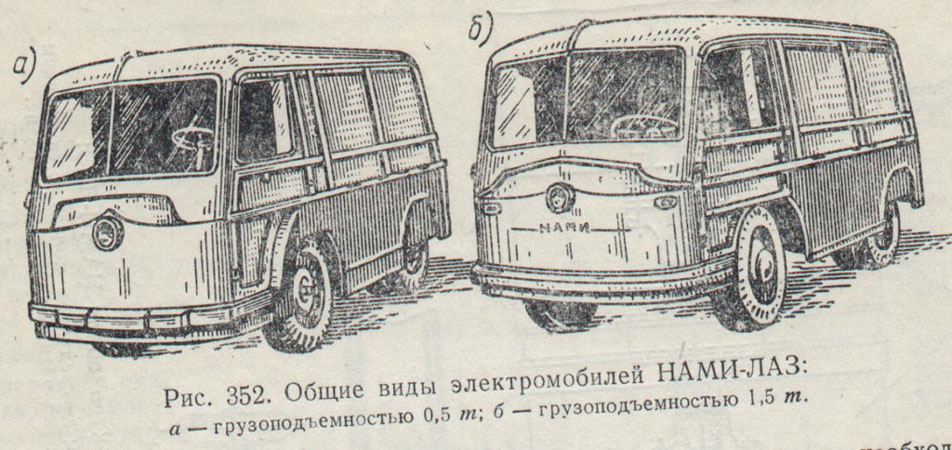
The peak of the production of electric cars hit the 1910s. From electric vehicles there was no burning and soot, women chose them, because they did not need to possess stunning physical strength to start them - unlike the internal combustion engines.
What were the disadvantages of electric vehicles? The roads were too good, people wanted to go far - and at the beginning of the century it was more difficult to place charging stations across every hundred kilometers. Without recharging, electric cars could drive one hundred one hundred and thirty kilometers, like some cars now.
Thanks to Henry Ford, car prices have declined, and an increase in oil production has caused a reduction in fuel costs. The electric starter - it was developed in 1912 - made cars with an internal combustion engine more comfortable. Since the thirties, the production of electric vehicles has ceased to be massive, despite attempts to use them for official purposes.
In the 1960s – 1970s, people thought about ecology and again remembered electric motors. But that's another story…

The whole cycle of articles:
Electric Dawn: 19th Century
Dawn and sunset of electric vehicles: the first half of the XX century
Electric car strikes back: the second half of the XX century
Revenge of the electric car: the beginning of the XXI century
The most promising type of car in the future can be considered electric, but so far it has not been sufficiently improved. Electric engines do not give any noise or soot, they are undoubtedly more convenient and more perfect than all the others ... Encyclopedic dictionary of Brockhaus and Efron.

In the last article, we dwelled on the fact that at the beginning of the 20th century electric vehicles were especially popular in New York.
')

In Russia, the dawn of electric vehicles was late, despite the efforts of individual engineers.
At the beginning of the century, such an omnibus from the Dux company for ten people already traveled around Moscow. And Ippolit Romanov, the inventor of the two-seater electric car, asked the St. Petersburg Duma to allow opening ten routes for eighty omnibuses. Such a turn of events did not suit the horse owners and izobopromyshnikov - they did everything possible to ensure that the project Romanov did not take place. Unfortunately, Romanov lost in this fight.
In 1914 there were 8 electric carriages in Russia: 4 trucks, 1 tricycle van and 3 private cars.

The firm "Dux" tried to produce such a bus for movement on rails.

Since there were a lot of electric cars and steam-powered cars in the United States at the beginning of the century, charging stations were there as often as gas stations. Electric car on charging at some barn.

US Senator Rhode Island George Whitmore on the electric car, 1906.

From 1907 in Detroit began to produce cars under the brand name Detroit Electric. These electric cars were collected until 1939. Initially, cars equipped with lead-acid batteries, but from 1911 to 1916, it was possible to choose a version with Edison's iron-nickel battery. The maximum speed was 32 km / h, and the car could drive 130 kilometers.
During World War I, gasoline prices were high, so in the 1910s electric cars were in special demand - the company sold up to two thousand units a year. In the 1920s, sales declined due to lower prices for cars with an internal combustion engine.
In this photo - Thomas Edison at the car of this brand. The company was owned by Thomas Edison, John Rockefeller and Henry Ford's wife, Clara Ford.

EV-Opera-Car, model 68/17 B.

1915 model.

Print ads for Detroit Electric cars of the 1920s.

Hybrid cars did not come up yesterday or the day before yesterday. In 1916, Clinton Edgar Woods began production of the Woods Dual Power Model 44 Coupe with an electric motor and an internal combustion engine — two at once.


In the USSR in 1935, an electric vehicle was built on the basis of GAZ-A.

In the same year, an accumulator garbage truck was built at MEI, having converted the ZIS-5 into it. The car was equipped with forty batteries with a total capacity of 168 ampere-hours, their weight was 1,400 kg. Such an electric vehicle was capable of transporting garbage weighing 1800 kg at a speed of 24 km / hour for forty kilometers. Engine power - 13 kW.

Swedish truck with an electric motor, 1943.

Nissan TAMA since 1947 was produced in the passenger and cargo versions. It was the first car with an electric engine Nissan.

Four NAMI-LAZ electric vehicles with a carrying capacity of 0.5 and 1.5 tons have been used by the Moscow Post since 1948. Another ten prototypes until 1958 carried the mail in Leningrad.

The peak of the production of electric cars hit the 1910s. From electric vehicles there was no burning and soot, women chose them, because they did not need to possess stunning physical strength to start them - unlike the internal combustion engines.
What were the disadvantages of electric vehicles? The roads were too good, people wanted to go far - and at the beginning of the century it was more difficult to place charging stations across every hundred kilometers. Without recharging, electric cars could drive one hundred one hundred and thirty kilometers, like some cars now.
Thanks to Henry Ford, car prices have declined, and an increase in oil production has caused a reduction in fuel costs. The electric starter - it was developed in 1912 - made cars with an internal combustion engine more comfortable. Since the thirties, the production of electric vehicles has ceased to be massive, despite attempts to use them for official purposes.
In the 1960s – 1970s, people thought about ecology and again remembered electric motors. But that's another story…

Source: https://habr.com/ru/post/376941/
All Articles